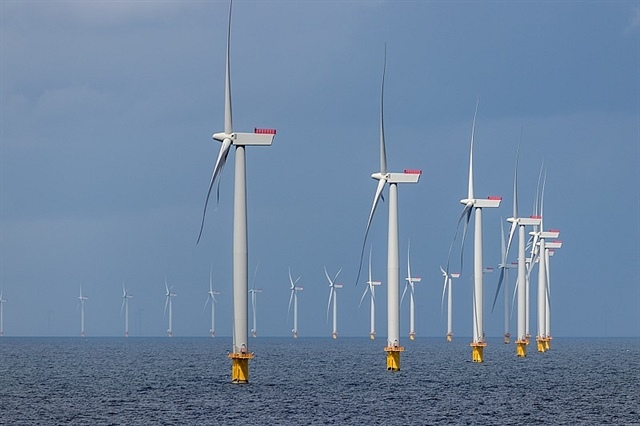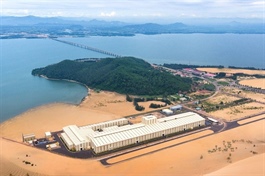MoIT proposes delaying offshore wind power until after 2030
MoIT proposes delaying offshore wind power until after 2030
The Ministry of Industry and Trade (MoIT) has proposed delaying the development of offshore wind power until after 2030, instead of the original target of about 6,000MW in the next five years.
|
According to Power Development Plan VIII, the country's offshore wind (OSW) power capacity should reach 6,000MW by 2030, but no projects have thus far been approved.
At a meeting on February 19, Minister of Industry and Trade Nguyen Hong Dien said that OSW power would need serious investments.
"Adjustments to PDP VIII are expected to develop this power source after 2030, reaching about 17,000MW by 2035," he said.
Instead of offshore, in the next five years, Vietnam will develop onshore and nearshore wind power with 27,800-34,670MW, an increase of about 15 per cent compared to the current plan.
The World Bank has assessed Vietnam's OSW power potential at about 600GW. In terms of prospects, this energy source could provide 12 per cent of the country's total electricity output by 2035.
Foreign investors in the renewable energy sector have introduced plans to implement OSW power projects in Vietnam, such as CIP Group (Denmark) and PNE (Germany). Two years ago, 36 domestic investors applied to research OSW power, but the Ministry of Natural Resources and Environment halted licences due to legal issues.
The development of OSW power projects faces major difficulties, such as inconsistent legal regulations on managing sea activities, large investments, and issues related to national defence and security.
Chairman of the European Chamber of Commerce in Vietnam Bruno Jaspaert said that an OSW power project takes at least three years to build. If these projects were to go into operation by 2030, construction needs to start in 2027, and all licences must be ready a year before.
The government has set a GDP growth target of at least 8 per cent this year, and double digits for the 2026-2030 period. To produce enough power to achieve this target, domestic demand by 2030 will be around 183,300-236,360MW, an increase of 18-54 per cent compared to the current plan, according to the MoIT.
The total capacity of coal-fired thermal power by 2030 will increase by 928MW compared to PDP 8, while thermal power using domestic gas sources is expected to reach about 10,861MW, unchanged from the current plan.
The total capacity of liquefied natural gas in the next five years is forecast at 8,824MW, a decrease of about 13,576MW compared to the target set in PDP 8, while hydropower, renewable energy, and battery storage sources will soar.
Concentrated and rooftop solar power will also increase by 25,867-52,825MW to 46,459-73,416MW. This source can be deployed quickly to meet demand in the 2026-2027 period.
The total capacity of the two nuclear power plants that have just started construction in Ninh Thuan province, is expected to be about 6,000-6,400MW, completed in 2030 and put into operation in the 2030-2035 period. Then by 2050, about 4,500-5,000MW of nuclear power will be added in the north and about 3,000MW in the central region.
Minister Dien said that the total investment for 2026-2030 has been estimated at $136-172 billion, including $118-148 billion for electricity sources, and $18-24 billion for the transmission grid.
To meet the large capital demand, the MoIT proposed solutions to diversify capital sources and forms of mobilisation (like bank credit, aid, and the stock market), along with domestic and foreign resources.
- 09:00 20/02/2025
























